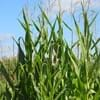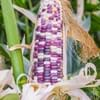Origin
South America, Chile
Central America, South America
Types
Melody, King Edward potato, Kennebec
Bush Beans, Pole Beans
Number of Varieties
Not Available
Habitat
Cold Regions, Tropical regions, Wet ground, Wet lands
Cultivated Beds
USDA Hardiness Zone
Not Available
Not Available
AHS Heat Zone
12-3
Not Available
Sunset Zone
A1, A2, A3, H1, H2, 1a, 1b, 2a, 2b, 3a, 3b, 4, 5, 6, 7, 8, 9, 10, 11, 12, 13, 14, 15, 16, 17, 18, 19, 20, 21, 22, 23, 24
A1, A2, A3, H1, H2, 1a, 1b, 2a, 2b, 3a, 3b, 4, 5, 6, 7, 8, 9, 10, 11, 12, 13, 14, 15, 16, 17, 18, 19, 20, 21, 22, 23, 24
Habit
Clump-Forming
Vining/Climbing
Flower Color
Blue, Purple, Red, White
Lavender
Flower Color Modifier
Bicolor
Bicolor
Fruit Color
Sandy Brown
Purple
Leaf Color in Spring
Green
Green, Purple
Leaf Color in Summer
Not Available
Green
Leaf Color in Fall
Not Available
Green
Leaf Color in Winter
Not Available
Not Available
Plant Season
Summer, Fall
Spring, Summer, Fall
Sunlight
Full Sun
Full Sun
Type of Soil
Loose, Well drained
Loam, Sand
The pH of Soil
Acidic
Neutral, Alkaline
Soil Drainage
Well drained
Well drained
Bloom Time
Early Summer, Summer, Late Summer
Indeterminate
Tolerances
Drought
Drought
Where to Plant?
Container, Ground, Pot
Container, Ground, Pot
How to Plant?
From bulbs
Seedlings
Plant Maintenance
Medium
Medium
Watering Requirements
Requires consistently moist soil, Requires regular watering, Requires watering in the growing season, Water daily during growing season
Do Not over Water, Requires regular watering, Water evenly
In Summer
Lots of watering
Lots of watering
In Spring
Moderate
Moderate
In Winter
Average Water
Average Water
Soil pH
Neutral
Neutral, Alkaline
Soil Type
Loam
Loam, Sand
Soil Drainage Capacity
Well drained
Well drained
Sun Exposure
Full Sun
Full Sun
Pruning
Remove damaged leaves, Remove dead branches, Remove dead leaves, Remove deadheads
Remove damaged leaves, Remove dead branches, Remove dead leaves
Fertilizers
15-15-15 amounts
5-10-10 fertilizer
Pests and Diseases
Red blotch
Alternaria Leaf Spot, Anthracnose, Aphids, Armyworm, Bacterial Blight
Plant Tolerance
Drought
Drought
Flower Petal Number
Single
Single
Foliage Texture
Coarse
Coarse
Foliage Sheen
Matte
Matte
Attracts
Beetles, Bugs, Early/Late Blight, Insects
Not Available
Allergy
Abdominal pain, Asthma, Dermatitis, Diarrhea, Eczema, Nausea, Runny nose, Sore Throat, Swelling, Throat itching, Tight chest, Urticaria, Vomiting
Not Available
Aesthetic Uses
Not Available
Not Available
Beauty Benefits
For treating wrinkles, Good for skin and hair, Improve skin tone, Moisturizing, Not Available, Treatment of Dark Spots
Beautiful Skin
Environmental Uses
Air purification
Fixes Nitrogen
Medicinal Uses
Bone strength, Cancer, Diarrhea, Digestion problems, High blood pressure, Improve heart health, Inflammation, Kidney Stones, Metabolism, Rheumatism, Weight management and satiety
Cancer, Diuretic, Homeopathy, Hypotensive, Miscellany
Part of Plant Used
Fruits
Leaves, Seedpod, Seeds
Other Uses
Used As Food, Used as Ornamental plant
Used for making brown dye, Used in biomass, Used in in reviving woollen fabrics
Used As Indoor Plant
Yes
Yes
Used As Outdoor Plant
Yes
Yes
Garden Design
Edible, Herb, Vegetable
Container, Edible, Herb, Vegetable, Vine
Botanical Name
SOLANUM tuberosum
PHASEOLUS vulgaris 'Purple King'
Common Name
Potato, Tater, Spud, Tuber
String bean, Field bean, French bean
In German
Kartoffel
Bohne
In French
Pomme de terre
Haricot vert
In Spanish
Patata
String Bean
In Greek
Πατάτα
Αμπελοφάσουλο
In Portuguese
Batata
Feijão de corda
In Polish
Ziemniak
Fasolka szparagowa
In Latin
SOLANUM TUBEROSUM
Gloria Bean
Phylum
Anthophyta
Magnoliophyta
Class
Magnoliopsida
Magnoliopsida
Family
Solanaceae
Fabaceae
Clade
Asterids
Angiosperms, Eudicots, Rosids
Tribe
Not Available
Phaseoleae
Subfamily
Not Available
Faboideae
Number of Species
Not Available
Importance of Potato and String Bean
Want to have the most appropriate plant for your garden? You might want to know the importance of Potato and String Bean. Basically, these two plants vary in many aspects. Compare Potato and String Bean as they differ in many characteristics such as their life, care, benefits, facts, etc. Every gardener must at least have the slightest clue about the plants he wants to plant in his garden. Compare their benefits, which differ in many ways like facts and uses. The medicinal use of Potato is Bone strength, Cancer, Diarrhea, Digestion problems, High blood pressure, Improve heart health, Inflammation, Kidney Stones, Metabolism, Rheumatism and Weight management and satiety whereas of String Bean is Cancer, Diuretic, Homeopathy, Hypotensive and Miscellany. Potato has beauty benefits as follows: For treating wrinkles, Good for skin and hair, Improve skin tone, Moisturizing, Not Available and Treatment of Dark Spots while String Bean has beauty benefits as follows: For treating wrinkles, Good for skin and hair, Improve skin tone, Moisturizing, Not Available and Treatment of Dark Spots.
Compare Facts of Potato vs String Bean
How to choose the best garden plant for your garden depending upon its facts? Here garden plant comparison will help you to solve this query. Compare the facts of Potato vs String Bean and know which one to choose. As garden plants have benefits and other uses, allergy is also a major drawback of plants for some people. Allergic reactions of Potato are Abdominal pain, Asthma, Dermatitis, Diarrhea, Eczema, Nausea, Runny nose, Sore Throat, Swelling, Throat itching, Tight chest, Urticaria and Vomiting whereas of String Bean have Not Available respectively. Having a fruit bearing plant in your garden can be a plus point of your garden. Potato has no showy fruits and String Bean has showy fruits. Also Potato is flowering and String Bean is not flowering . You can compare Potato and String Bean facts and facts of other plants too.





